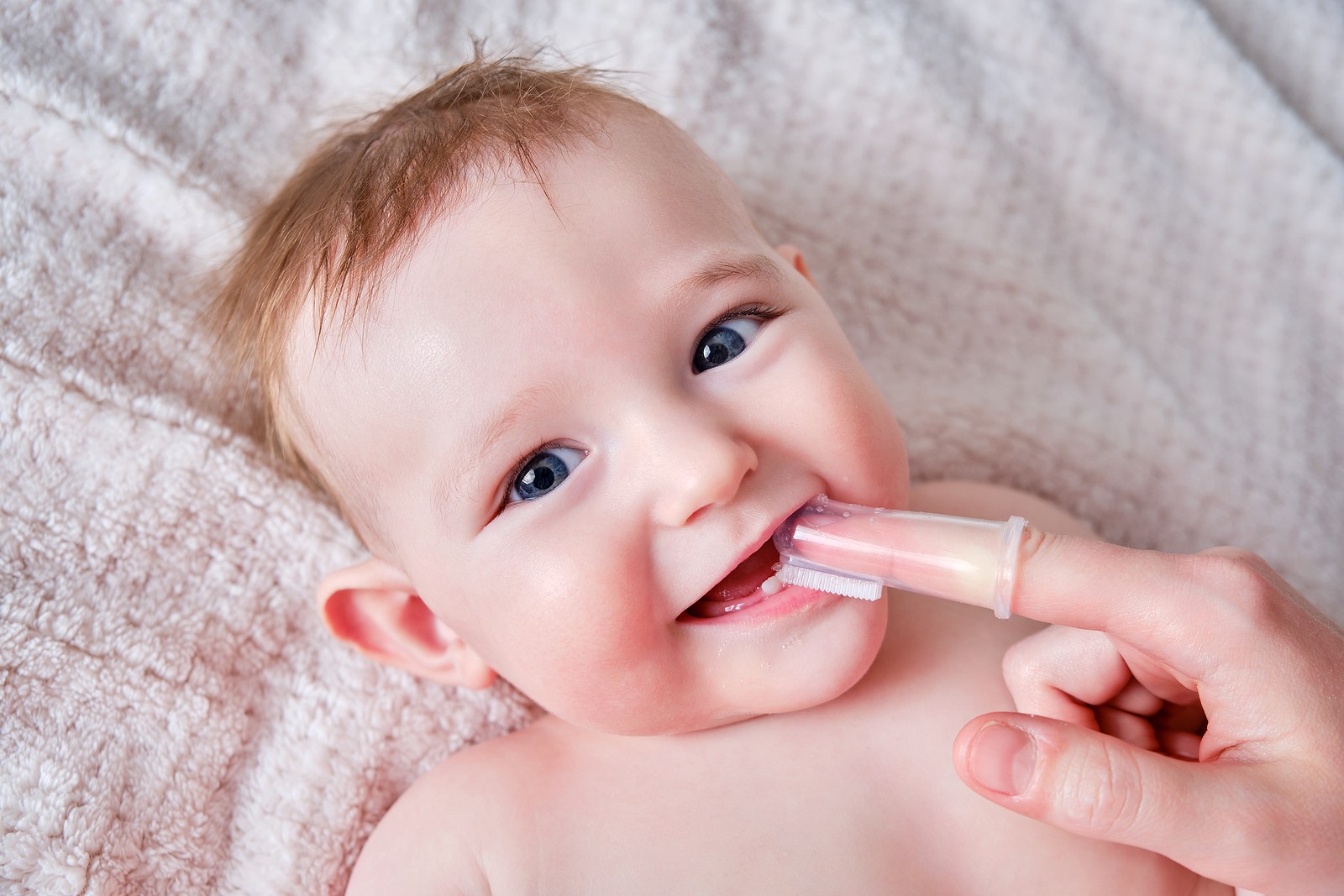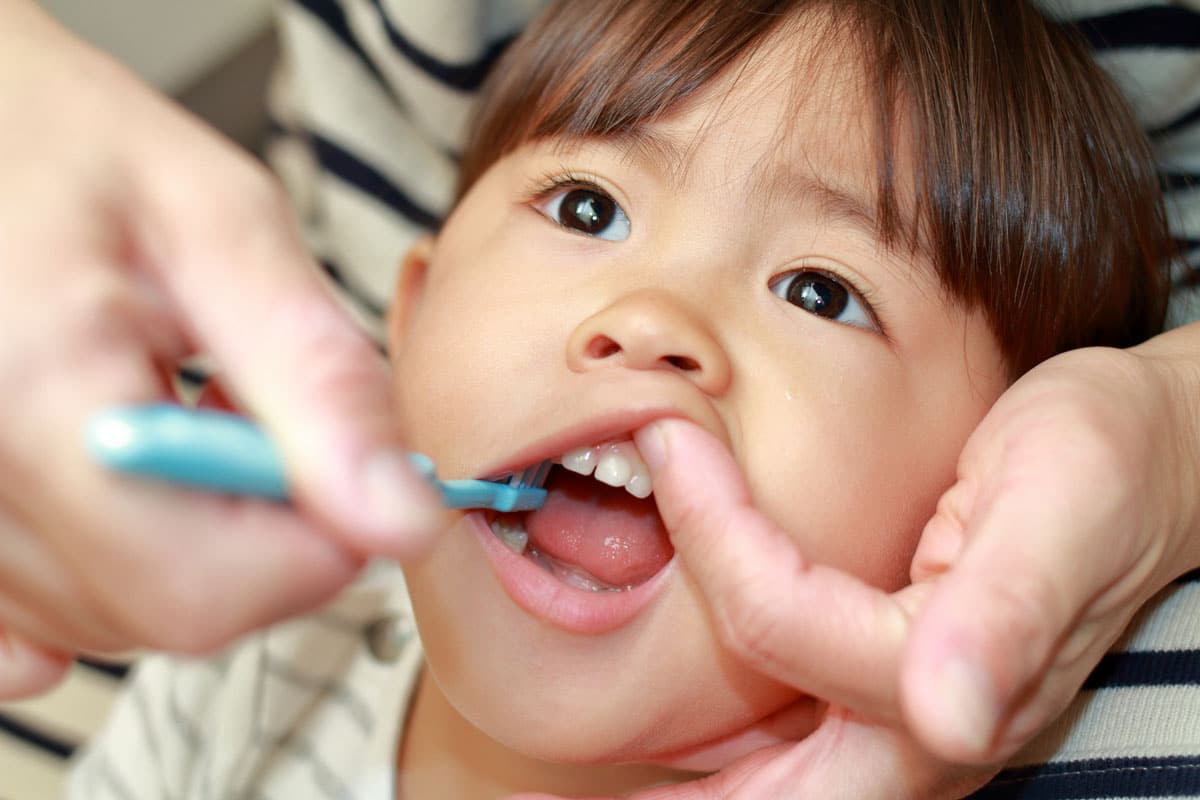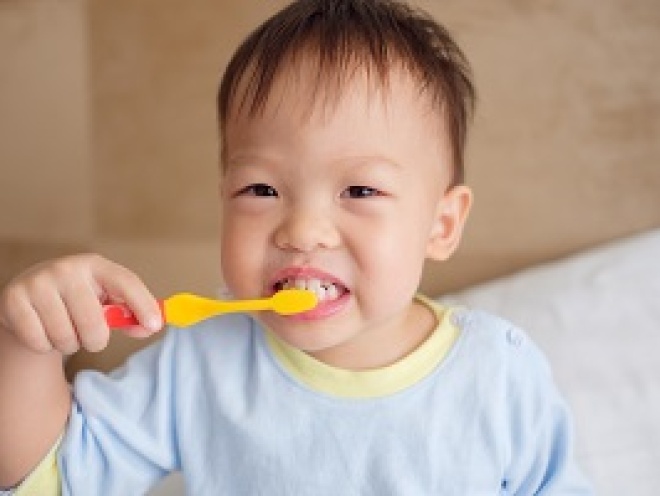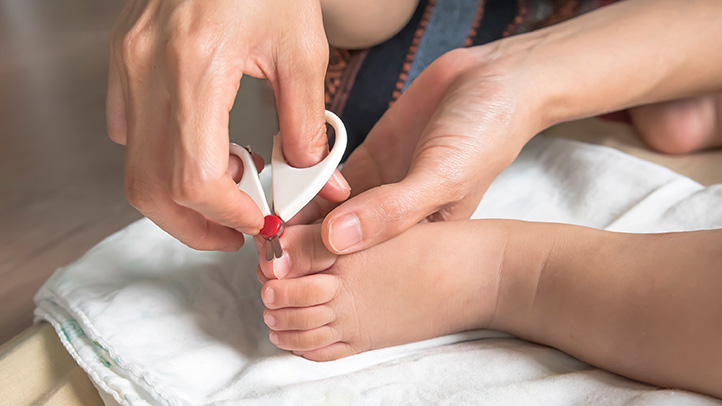Use a soft-bristled toothbrush and a rice-sized amount of fluoride toothpaste. Gently brush in small circular motions.
Brushing your baby’s teeth is crucial for maintaining good oral health from an early age. Start cleaning your baby’s mouth even before the first tooth appears by wiping gums with a clean, damp cloth. Once the first tooth emerges, use a small, soft-bristled toothbrush with a tiny smear of fluoride toothpaste.
Brush gently in small circular motions, focusing on the front and back of each tooth. Establishing a routine helps your baby get used to the process. Remember to replace the toothbrush every three months or sooner if the bristles become frayed. Regular brushing prevents cavities and sets the foundation for a healthy smile.
Importance Of Early Dental Care
Early dental care is crucial for your baby’s overall health. Healthy teeth help with eating, speaking, and smiling. Starting dental care early sets a good foundation.
Foundation For Healthy Teeth
Brushing your baby’s teeth builds strong, healthy teeth. It removes plaque and food particles. This prevents bacteria growth.
Begin brushing as soon as the first tooth appears. Use a small, soft-bristled toothbrush. Use a tiny amount of fluoride toothpaste.
| Age | Toothpaste Amount |
|---|---|
| 0-3 Years | Rice grain size |
| 3+ Years | Pea size |
Preventing Dental Issues
Early brushing prevents many dental problems. It reduces the risk of cavities. It helps avoid gum diseases.
Regular dental care also helps in spotting early signs of issues. It allows for timely treatment. This can save your baby from pain and discomfort.
- Brush twice daily
- Use fluoride toothpaste
- Visit the dentist regularly
When To Start Brushing
Brushing your baby’s teeth is crucial for their oral health. But many parents wonder when to start this important habit. Knowing the right time can set the foundation for a lifetime of good dental care.
Signs It’s Time
Understanding the signs it’s time to brush your baby’s teeth can be simple. Look for the following indicators:
- The appearance of the first tooth
- Your baby shows interest in your toothbrush
- Your baby starts eating solid foods
The first tooth usually appears around 6 months. Start brushing as soon as you see it. Early brushing helps prevent tooth decay.
Age-appropriate Techniques
Use age-appropriate techniques to make brushing safe and effective for your baby. Below are steps for different stages:
| Age | Technique |
|---|---|
| 0-6 Months | Gently wipe gums with a clean, damp cloth. |
| 6-12 Months | Use a soft-bristled toothbrush with water. No toothpaste needed. |
| 12-24 Months | Add a tiny smear of fluoride toothpaste. Brush twice daily. |
Ensure to use a toothbrush with a small head and soft bristles. This makes it easier to reach all areas of your baby’s mouth.
Make brushing fun by singing a song or playing a game. This can help your baby enjoy the routine and look forward to it.
Choosing The Right Toothbrush
Choosing the right toothbrush for your baby is crucial. A good toothbrush ensures proper dental hygiene and comfort. This section will help you pick the perfect toothbrush for your little one.
Infant Toothbrush Types
There are various types of infant toothbrushes available. Understanding their differences helps in making an informed choice.
- Finger Toothbrush: Fits over your finger. Ideal for babies without teeth.
- Training Toothbrush: Soft bristles. Suitable for babies with a few teeth.
- Electric Toothbrush: Designed for older infants. Provides gentle vibrations.
Features To Look For
When selecting a toothbrush, consider these important features:
| Feature | Description |
|---|---|
| Soft Bristles | Gentle on gums and teeth. |
| Small Head | Fits comfortably in a baby’s mouth. |
| Non-Slip Handle | Ensures a firm grip. |
| BPA-Free | Safe material for your baby. |
Choosing the right toothbrush sets the foundation for your baby’s dental health. Make sure to consider these features and types for the best care.

Credit: elitekingwood.com
Selecting Baby-friendly Toothpaste
Choosing the right toothpaste for your baby is crucial. It ensures their dental health and makes brushing enjoyable. Here’s how to select a baby-friendly toothpaste that suits your child’s needs.
Safe Ingredients
Always check the ingredient list on the toothpaste packaging. Look for non-toxic and fluoride-free options. Fluoride can be harmful if swallowed in large amounts. Instead, opt for toothpaste with xylitol. Xylitol helps prevent cavities and is safe for babies.
Avoid toothpaste with SLS (sodium lauryl sulfate). SLS can cause irritation in your baby’s mouth. Choose toothpaste with natural ingredients such as calcium phosphate and silica. These ingredients clean teeth gently and effectively.
| Safe Ingredients | Reason |
|---|---|
| Xylitol | Prevents cavities |
| Calcium Phosphate | Strengthens teeth |
| Silica | Gently cleans teeth |
Flavor Preferences
Babies can be picky about flavors. Choose a toothpaste with a mild flavor. Common flavors include fruit and vanilla. These flavors make brushing a pleasant experience.
Avoid mint flavors as they can be too strong for babies. Let your baby try different flavors. You can buy small tubes first to see which one they prefer.
- Fruit flavors
- Vanilla flavors
- Strawberry flavors
Once you find a flavor your baby likes, stick with it. Consistency helps build a brushing routine.
Proper Brushing Techniques
Brushing your baby’s teeth is essential for maintaining oral health. Proper brushing techniques ensure your baby’s teeth stay clean and healthy. This guide will help you understand the correct methods and avoid common mistakes.
Step-by-step Guide
- Start with a small, soft-bristled toothbrush.
- Use a tiny smear of fluoride toothpaste.
- Hold your baby securely with their head resting on your lap.
- Gently brush in small circles on each tooth.
- Focus on the front, back, and chewing surfaces.
- Brush the gums and tongue gently.
- Encourage your baby to spit out the toothpaste.
- Rinse the toothbrush thoroughly after use.
Common Mistakes
- Using too much toothpaste: Only a tiny smear is needed.
- Brushing too hard: Gentle brushing prevents gum damage.
- Skipping areas: Ensure all tooth surfaces are cleaned.
- Neglecting the gums: Brush the gums to remove bacteria.
- Not brushing long enough: Spend at least two minutes brushing.
- Not replacing the toothbrush: Change it every three months or sooner.
Making Brushing Fun
Brushing your baby’s teeth can sometimes be a challenging task. But making it fun can turn it into an enjoyable activity. Here, we’ll explore ways to make brushing fun and engaging for your little one.
Engaging Activities
Incorporating engaging activities can make brushing more enjoyable. Try using a favorite toy to demonstrate brushing. This can help your baby understand the process better.
- Let them pick their toothbrush.
- Use a mirror to show them their teeth.
- Turn brushing into a game with rewards.
Another idea is to use colorful toothbrushes and toothpaste. Bright colors can attract your baby’s attention and make brushing more exciting.
Incorporating Songs
Adding songs to the brushing routine can make it more entertaining. Singing a fun song can distract your baby and make brushing time fly by.
- Create a brushing song with your baby’s name.
- Use popular nursery rhymes with brushing lyrics.
- Find brushing songs online for more ideas.
Music can make brushing a fun and memorable experience for your baby. Try different songs to see which ones they enjoy the most.
Handling Resistance
Handling resistance while brushing your baby’s teeth can be challenging. Babies often resist new routines, especially when it involves their mouth. Here are some effective strategies to ease the process.
Dealing With Fussiness
Babies can be fussy about brushing their teeth. Here are some tips to make it easier:
- Distractions: Use a fun song or a favorite toy to distract them.
- Gentle Approach: Be gentle and calm to avoid scaring your baby.
- Positive Reinforcement: Praise your baby for any cooperation, no matter how small.
Building A Routine
Creating a consistent routine helps reduce resistance over time. Follow these steps:
- Start Early: Begin brushing as soon as the first tooth appears.
- Set a Time: Brush at the same time every day, preferably after meals.
- Consistency: Stick to the routine daily to build a habit.
| Time | Activity |
|---|---|
| Morning | Brush after breakfast |
| Evening | Brush before bedtime |
By incorporating these techniques, you can handle resistance effectively. This makes brushing your baby’s teeth a smoother experience for both of you.

Credit: www.abqpediatricdentistry.com
Regular Dental Checkups
Regular dental checkups are crucial for your baby’s oral health. These visits help catch any issues early. They also ensure your baby’s teeth develop correctly.
First Visit Expectations
Your baby’s first dental visit should happen by their first birthday. This visit helps your baby get used to the dentist. The dentist will check your baby’s mouth and teeth. They will look for any problems. They will also give you tips on brushing and diet.
Frequency Of Visits
After the first visit, your baby should see the dentist every six months. Regular visits help keep your baby’s teeth healthy. The dentist can spot any issues early. They can also give you advice on brushing and caring for your baby’s teeth.
| Age | Frequency of Visits |
|---|---|
| 0-1 Year | First visit by first birthday |
| 1-2 Years | Every 6 months |
| 2+ Years | Every 6 months |
- First visit by first birthday.
- Regular visits every six months.
- Early detection of any dental issues.
Remember, starting dental visits early sets the stage for a lifetime of healthy teeth. Your baby’s smile will thank you!

Credit: www.nct.org.uk
Frequently Asked Questions
When Do I Start Brushing My Baby’s Teeth?
Start brushing your baby’s teeth as soon as the first tooth appears. Use a soft, baby toothbrush and fluoride toothpaste.
Is It Ok Not To Brush Baby Teeth?
No, it’s not OK. Brushing baby teeth prevents cavities and establishes good oral hygiene habits early on.
Do Babies Need Toothpaste?
Yes, babies need toothpaste. Use a tiny smear of fluoride toothpaste for babies under three years old. It helps prevent cavities and promotes healthy teeth. Always choose a toothpaste suitable for infants.
When Should I Start Cleaning My Baby’s Mouth?
Start cleaning your baby’s mouth before their first tooth appears. Use a soft, damp cloth to gently wipe gums.
Conclusion
Brushing your baby’s teeth is crucial for their dental health. Start early, use gentle techniques, and choose the right tools. Establishing good habits now will ensure a lifetime of healthy smiles. Remember, consistency is key. By following these steps, you set your child on the path to excellent oral hygiene.

